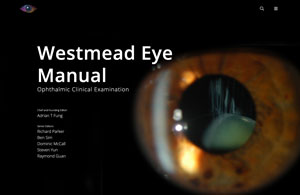16 Vitreomacular Interface Disorders
16.1 Epiretinal Membrane Peel
16.2.1 Macular Hole Repair (Surgical)
16.2.2 Macular Hole Repair (Medical Therapy)
16.3 Vitreomacular Traction Syndrome
16.4 Myopic Traction Maculopathy – Vitrectomy
16.5.1 Myopic Traction Maculopathy – Macular Buckling
16.5.2 Myopic Traction Maculopathy – Macular Buckling (AJL)
16.5.2 Myopic Traction Maculopathy – Macular Buckling (AJL)
Macular buckling is a technique used in the management of myopic traction maculopathy, the theoretical background is discussed in more detail in previous chapters. Other techniques for treating this challenging condition include pars plana vitrectomy with or without internal limiting membrane peeling and scleral imbrication.
There are several options in terms of hardware for this procedure. The most commonly used implant types are listed in Table 16.5.2.1:
Implant Options for Macular Buckling
- Scleral sponges
- T-shaped buckle (France Chirurgie Instrumentation, Paris, France)
- Ando plombe (Ondeko Corporation, Tokyo, Japan)
- Adjustable macular buckle (Micromed, Italy)
- AJL macular buckle (AJL Ophthalmic, Spain)
- L-shaped buckle
The focus of this chapter is on the use of the AJL macular buckle implant. The AJL buckle comes in standard and custom sizes. The choice of implant size is based on the axial length of the eye.
Clinical workup should include measurement of axial length to determine the size of buckle required. Pre-operative OCT and colour fundus photography imaging is helpful for landmarking the foveal center as it can be sometimes challenging in highly myopic eyes to identify.
We describe the technique for implantation of the AJL buckle using chandelier internal illumination. The steps of surgery are as follows, and can be seen in Video 16.5.2.1:
- Rectus muscle isolation
- Circumferential conjunctival peritomy is performed.
- Rectus muscles are isolated using a muscle hook and then secured with 2-0 silk sutures.
- Circumferential conjunctival peritomy is performed.
- Chandelier placement
- A 25-gauge trocar is placed though the pars plana inferotemporally.
- A 25-gauge chandelier is quickly placed through the trochar to minimize vitreous prolapse.
- A 25-gauge trocar is placed though the pars plana inferotemporally.
- Macular buckle placement
- The macular buckle is placed from the superotemporal quadrant taking care to position the distal bulb at the macula.
- The proximal end is secured to the sclera using a horizontal mattress with a 5-0 nylon/Mersiline suture. Alternatively, a temporary tie can be placed to allow for easier adjustment.
- A further 5-0 nylon suture is placed along the shaft of the buckle for improved indentation of the bulb.
- The macular buckle is placed from the superotemporal quadrant taking care to position the distal bulb at the macula.
- Assessment of buckle placement
- The indentation is then assessed utilizing the chandelier and microscope system.
- Preoperative fundus photographs and OCT images should be available in the operating room to facilitate examination and localization of the fovea
- Other techniques that can be utilized for assessment include intraoperative OCT, transillumination, and visualization utilizing an indirect ophthalmoscope.
- The indentation is then assessed utilizing the chandelier and microscope system.
- Adjustment of the buckle
- If the buckle is not centered on the fovea then the 5-0 nylon sutures should be removed, And the buckle adjusted accordingly.
- Closure
- The chandelier is removed along with the 25-gauge port. The sclerotomy should self-seal.
- The peritomy is closed with a 7-0 vicryl/6-0 plain gut suture.
- The chandelier is removed along with the 25-gauge port. The sclerotomy should self-seal.
All rights reserved. No part of this publication which includes all images and diagrams may be reproduced, distributed, or transmitted in any form or by any means, including photocopying, recording, or other electronic or mechanical methods, without the prior written permission of the authors, except in the case of brief quotations embodied in critical reviews and certain other noncommercial uses permitted by copyright law.
Westmead Eye Manual
This invaluable open-source textbook for eye care professionals summarises the steps ophthalmologists need to perform when examining a patient.

